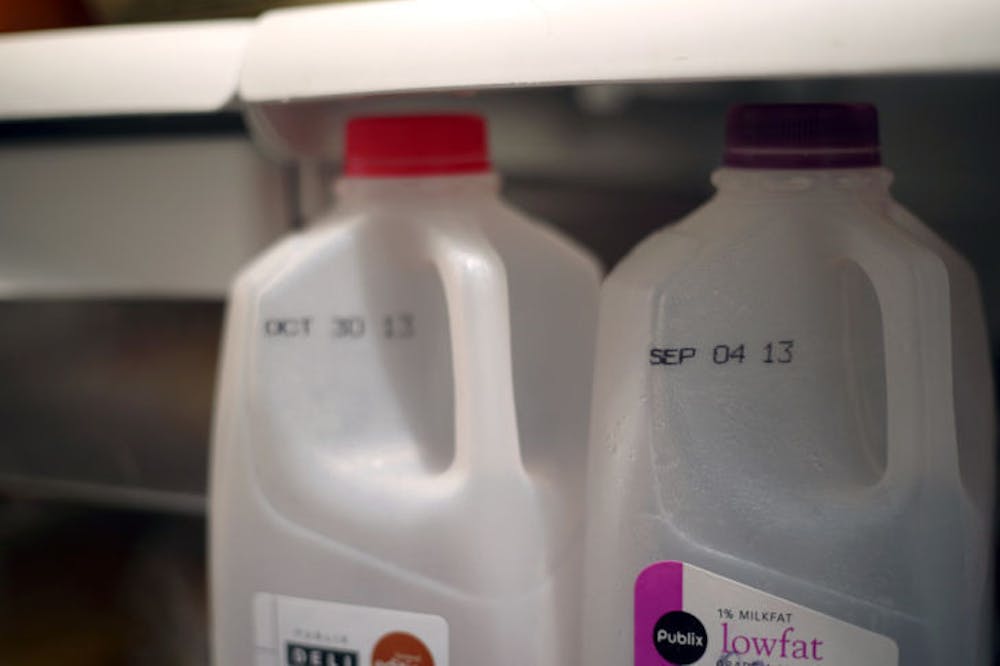If only our food could talk, then there would be no confusion about what was still OK to eat or what should be thrown out. But of course, talking tomatoes would lead to a lot of general confusion and conflicted vegetarians.
But without the direct input from food, we rely on “sell by,” “use by” or “best before” labels to tell us when we can still drink that jug of milk or when it will result in stomach cramps a couple of hours later (and not the kind from having too much milk and cookies).
However, a recent study by the Natural Resources Defense Council (NRDC) reports consumers often misinterpret these labels and plenty of good, edible food goes in the trash. According to the council, the dates are not meant to indicate the safety of food but rather to suggest when the food is at its peak quality.
This misunderstanding results in the unnecessary disposal of billions of pounds of food every year, according to the NRDC. Nearly half the food in America never gets eaten. That’s like throwing away $165 billion dollar bills.
Confusion over date stamps leads nine out of 10 Americans to trash food that could have been consumed, according to a survey by the Food Marketing Institute. When many families are trying to save money, a seemingly simple thing like the method of labeling food is an important issue.
Yet, Keith Schneider, 50, a professor in UF’s Department of Food Science and Human Nutrition, said it is not that simple. Schneider said companies are trying to maintain a certain quality level, and they don’t want to give consumers a bad taste experience. For instance, he said if a company that sells crackers extends its product’s shelf life, it might still be edible by the end date, but the crackers may be slightly oxidized and stale.
“Consumers in the U.S. don’t like anything that is not perfect,” Schneider said. Food manufacturers are aware of this and are very conservative with how they label products.
UF anthropology senior Donna Smailes, 20, said it is bummer that so many things are thrown away, but it’s business. “They are all in it to make money, so they want you to like their product when it is the best,” she said.
Also, companies may be afraid of being sued, Schneider said. A lot of the time milk is still safe to drink way past the “sell by” date, but corporations don’t want to take the risk of someone becoming sick.
Milk producers cannot be certain that their customers are going to properly store their milk, so they take our shortcomings into account when labeling their cartons. For instance, many college students may have mini refrigerators in their dorms with a knob that turns to different levels of cold. However, without thermometers in their fridges, they can’t ensure their milk is being stored at the correct temperature and will last the length of its optimum shelf life, so manufacturers are modest with their expiration dates.
So you may think if “the man” cannot be trusted, you can at least rely on your senses. But Schneider warns against the sniff test. You are not going to know if there are pathogens in the food by smelling it, he said. You will only be able to tell if it’s spoiled.
Smailes admits she judges food by how it smells.
“Unless it is milk, I don’t pay attention to sell by dates,” she said.
Schneider recommends going by the “first in, first out” rule, so eating your food in rotation according to when you buy it. He says he tries not to overbuy food, but instead gets groceries more frequently.
The NRDC proposes clarifying and standardizing the current labeling system in order to better communicate with consumers. The challenge will be to balance the reduction of America’s waste with its responsibility to keep its consumers safe.
A version of this story ran on page 10 on 9/26/2013 under the headline "Don’t cry over that gallon of expired milk: Brave a big gulp"
Expired milk sits in a fridge Wednesday afternoon. A recent study suggested food and drinks with expired labels may not be immediately inedible.






